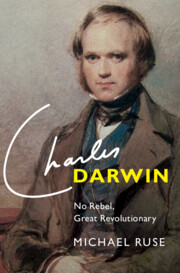Book contents
- Charles Darwin
- Frontispiece
- Charles Darwin
- Copyright page
- Dedication
- Contents
- Figures
- Acknowledgments
- Introduction
- 1 Beginnings
- 2 Charles Robert Darwin
- 3 The Origin of Species
- 4 Evolution in the Nineteenth Century
- 5 Evolution in the Twentieth Century
- 6 Normal Science
- 7 Philosophy
- 8 Religion
- 9 Literature
- 10 Social Issues
- Epilogue
- References
- Index
9 - Literature
Published online by Cambridge University Press: 05 December 2024
- Charles Darwin
- Frontispiece
- Charles Darwin
- Copyright page
- Dedication
- Contents
- Figures
- Acknowledgments
- Introduction
- 1 Beginnings
- 2 Charles Robert Darwin
- 3 The Origin of Species
- 4 Evolution in the Nineteenth Century
- 5 Evolution in the Twentieth Century
- 6 Normal Science
- 7 Philosophy
- 8 Religion
- 9 Literature
- 10 Social Issues
- Epilogue
- References
- Index
Summary
Remarkably, literature was the field where Darwinian thinking was immediately and warmly received. Charles Dickens’s weekly magazine, All the Year Round, at once published articles that gave detailed, sympathetic accounts of the theory of the Origin, and these were followed by writers using Darwinian themes in their fiction and poetry, Dickens himself using sexual selection to structure a key relationship in Our Mutual Friend. This continues to the present, when leading novelists like Ian McEwan and Marilynne Robinson use very different reactions to Darwin to mold their narratives.
- Type
- Chapter
- Information
- Charles DarwinNo Rebel, Great Revolutionary, pp. 162 - 179Publisher: Cambridge University PressPrint publication year: 2024

